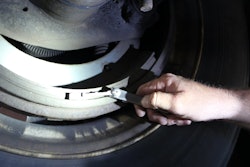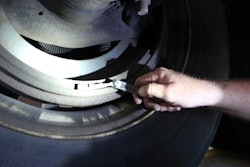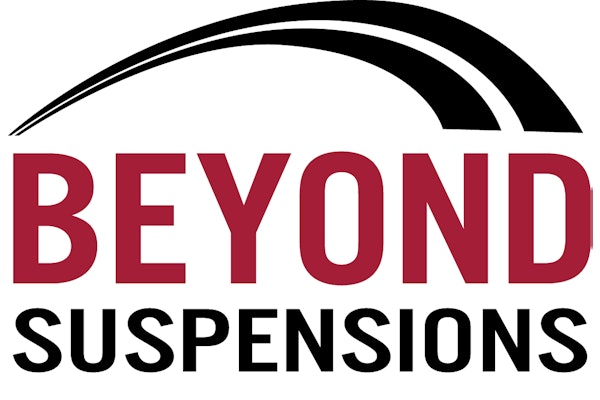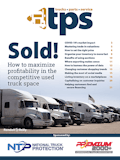The lift axle’s wheel fasteners had been jammed into place with an air impact wrench, punctuated by the rattling sound that only these tools can provide. At least that was what the coroner’s inquest was told. Poorly attached in the first place, eight of the fasteners were able to spin free, two snapped, and the runaway wheel bounced across three lanes of one of North America’s busiest highways – the 401 that cuts through southern Ontario.
Then the wheel vaulted over the guardrail and into Angela Worona’s Pontiac Grand Am.
The January 1995 crash probably would have been dismissed as a freak accident, except for the fact that the scenario was repeated a few weeks later.
Jamie Tyrell was driving west of the city when a dual wheel assembly dislodged from a trailer and crashed into his car. Suddenly, runaway truck wheels were making headlines, even when they rolled into a ditch. Anyone who was associated with the industry was fielding questions about vehicle maintenance. Roadside inspections became media events. Trucks were being vilified in the way that Stephen King describes the Plymouth Fury known as Christine.
Wheel installation procedures became a political issue as well. Ontario’s Conservative government reacted with a maximum fine of up to $50,000 for lost wheels, along with an “absolute liability” provision that effectively limited any defense to prove that the wheels did not come off in the first place. (Much to the embarrassment of the government, one of its own snowplows lost a wheel just before the fine was introduced.)
But any real solution needed to involve more than penalties, and the Ontario Trucking Association (OTA) helped the government come up with an answer. It accelerated plans to introduce a training program for wheel installers, which had been discussed during an earlier task force on truck safety.
Provincial officials eagerly made it mandatory. Ever since, the eight-hour Commercial Vehicle Wheel Service Training program has been required for anyone who installs wheels on a vehicle with a Gross Vehicle Weight of more than 20,000 pounds.
A government certificate is required to do the work that could once be completed by any employee in the shop. The only people who are exempt are the licensed technicians and trailer repair personnel who already have received training of their own.
“For the first time, we have an industry-developed program and standards deemed acceptably by government and put into law to ensure that everyone plays by the rules. The proper balance of government regulations and industry self-regulation has been struck,” OTA President David Bradley said at the time.
More than a decade later, the Canadian province still has the toughest rules for wheel installers in North America.
Granted, the maximum fine has yet to be paid. Now that lost wheels are not being discussed in the province’s legislature, most of the related fines for wheel losses are closer to the minimum of $2,000. Even the absolute liability provision failed court challenges. Ryder won a case linked to a wheel that was lost a few days after the law was introduced because the wheels did not actually detach from the fasteners; the entire wheel assembly broke free.
“Suppose a tractor-trailer lost the trailer it was hauling,” Judge John Laskin mused in his written ruling. “Although the trailer would have separated as a unit, because it included wheels, the owner of the rig could be convicted










